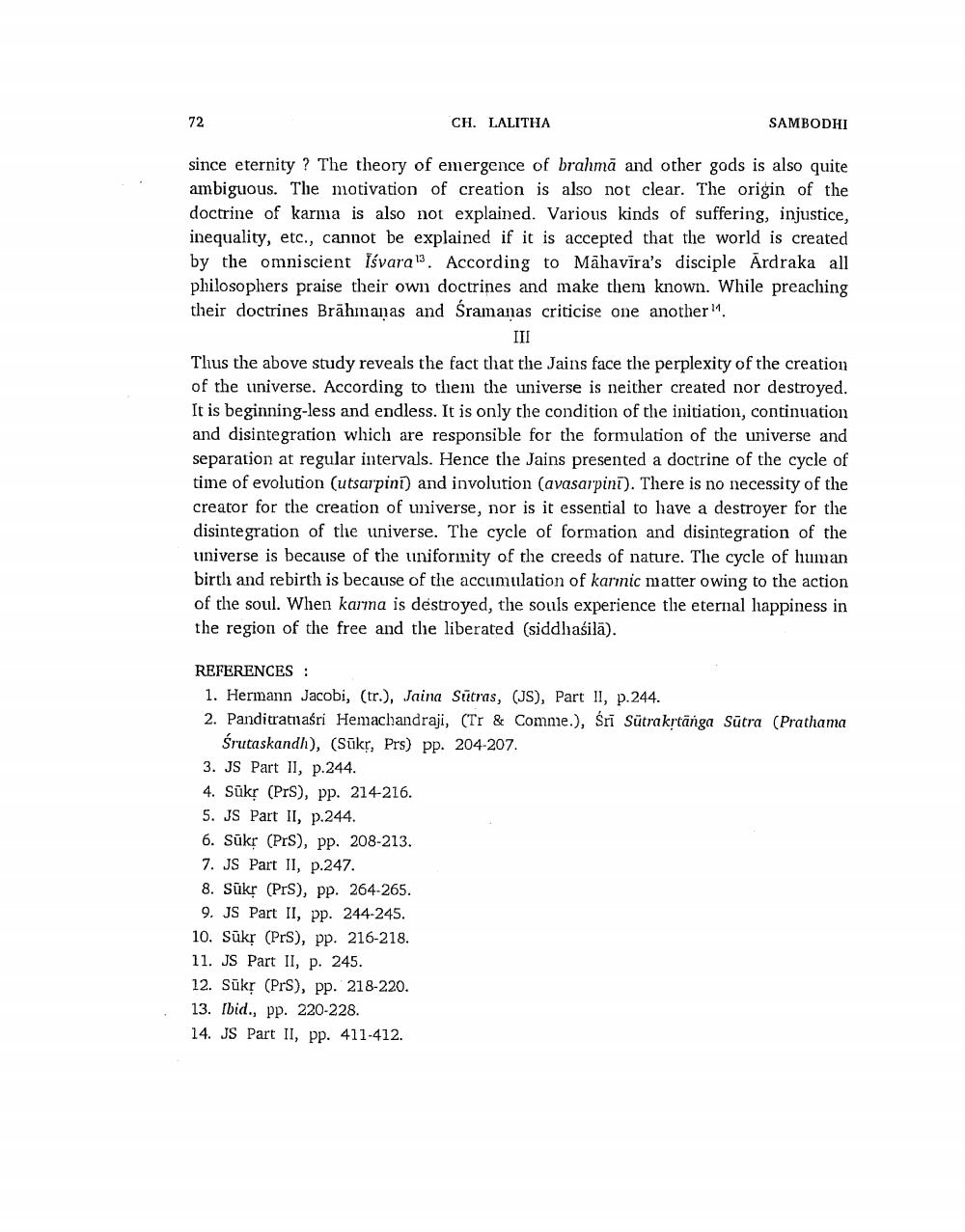________________
72
CH. LALITHA
SAMBODHI
since eternity ? The theory of emergence of brahma and other gods is also quite ambiguous. The motivation of creation is also not clear. The origin of the doctrine of karma is also not explained. Various kinds of suffering, injustice, inequality, etc., cannot be explained if it is accepted that the world is created by the omniscient Iśvara 13. According to Māhavīra's disciple Ardraka all philosophers praise their own doctrines and make them known. While preaching their doctrines Brāhmaṇas and śramanas criticise one another".
III Thus the above study reveals the fact that the Jains face the perplexity of the creation of the universe. According to them the universe is neither created nor destroyed. It is beginning-less and endless. It is only the condition of the initiation, continuation and disintegration which are responsible for the formulation of the universe and separation at regular intervals. Hence the Jains presented a doctrine of the cycle of time of evolution (utsarpini) and involution (avasarpinī). There is no necessity of the creator for the creation of universe, nor is it essential to have a destroyer for the disintegration of the universe. The cycle of formation and disintegration of the universe is because of the uniformity of the creeds of nature. The cycle of human birth and rebirth is because of the accumulation of karmic matter owing to the action of the soul. When karma is destroyed, the souls experience the eternal liappiness in the region of the free and the liberated (siddhasila).
REFERENCES : 1. Hermann Jacobi, (tr.), Jaina Sūtras, (JS), Part II, p. 244. 2. Panditratnasri Hemachandraji, (Tr & Comme.), Sri Sütrakrtänga Sūtra (Prathama
Śrutaskandh), (Sükr, Prs) pp. 204-207. 3. JS Part II, p.244. 4. Sükr (Prs), pp. 214 216. 5. JS Part II, p.244. 6. Sükr (Prs), pp. 208-213. 7. JS Part II, p.247. 8. Sükr (Prs), pp. 264-265. 9. JS Part II, pp. 244-245. 10. Sūkp (Prs), pp. 216-218. 11. JS Part II, p. 245. 12. Sūkp (Prs), pp. 218-220. 13. Ibid., pp. 220-228. 14. JS Part II, pp. 411-412.




